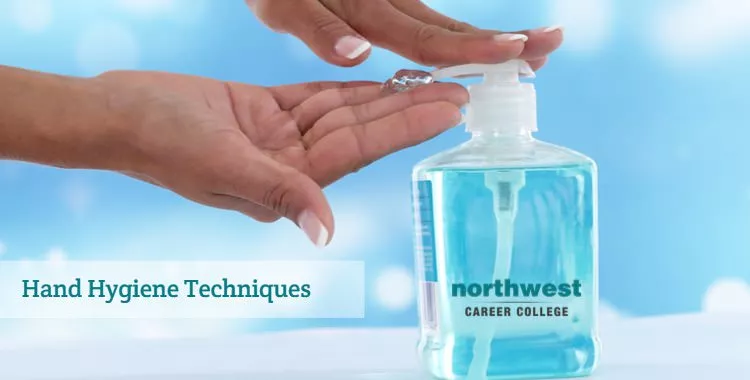Hand Hygiene Techniques For Phlebotomists
- Phlebotomy Technician
- April 15, 2025
- 3.4k views
- 3 min read

Hand hygiene is an essential part of the daily routine for anyone working in a healthcare environment. Cleaning your hands by using either hand washing, antiseptic hand wash, or using an alcohol-based hand sanitizer, including foam or gel, can help to prevent the spread of potentially deadly germs to patients and the risk of a healthcare provider being colonized or infected by germs acquired from the patient.
This is especially true of phlebotomists, as their normal responsibilities include the drawing and handling of patient’s blood.
Table of Contents
Alcohol-Based Hand Sanitizer vs. Washing with Soap and Water
As a general rule, alcohol-based hand sanitizers are the most effective products for reducing the number of germs on the hands of a healthcare provider, with antiseptic soaps and detergents representing the next most effective product and non-antimicrobial soaps the least effective.
During routine patient care alcohol-based hand sanitizers should be used regularly to clean hands and in the following situations:
- Before eating
- Before and after having direct contact with a patient’s intact skin (taking a pulse or blood pressure, performing physical examinations, lifting the patient in bed)
- After contact with blood, body fluids or excretions, mucous membranes, non-intact skin, or wound dressings
- After contact with inanimate objects (including medical equipment) in the immediate vicinity of the patient
- If hands will be moving from a contaminated-body site to a clean-body site during patient care
- After glove removal
- After using a restroom

Washing with antiseptic soap and water should be used on the following occasions:
- When hands are visibly dirty
- After known or suspected exposure to Clostridium difficile if your facility is experiencing an outbreak or higher endemic rates
- After known or suspected exposure to patients with infectious diarrhea during norovirus outbreaks
- If exposure to Bacillus anthracis is suspected or proven
- Before eating
- After using a restroom
Proper Hand Hygiene Techniques
Alcohol-based hand sanitizers
Put product on your hands and rub your hands together. Cover all surfaces and continue to rub the product in until your hands feel dry. This should take around 20 seconds.
Antiseptic soap and water
When cleaning your hands with soap and water, first wet your hands with water, then apply the product to your hands, and rub your hands together vigorously for at least 15-20 seconds, covering all surfaces of the hands and fingers.
Rinse your hands with water and use disposable towels to dry. Use a towel to turn off the faucet.
Avoid using hot water to prevent drying of skin.
False Nails and Jewelry
Studies show germs can live under artificial nails even after handwashing. Phlebotomists should:
- Avoid artificial nails/extensions
- Keep nails < ¼ inch long
Jewelry may harbor bacteria and compromise glove integrity. It’s recommended to remove all hand jewelry before starting work.
Learning New Skills at NCC
At Northwest Career College, we pride ourselves on providing one of the premier Phlebotomy Schools in Las Vegas. Our phlebotomy students have an 89% national exam pass rate and you can graduate in as little as three months. Our established, seasoned instructors will take you through every aspect of Phlebotomy and Northwest offers day, afternoon and night classes to accommodate your busy Las Vegas work and family schedule. Call us today at (702) 403-1592 to speak to one of our admissions specialists about your new Phlebotomy career.



